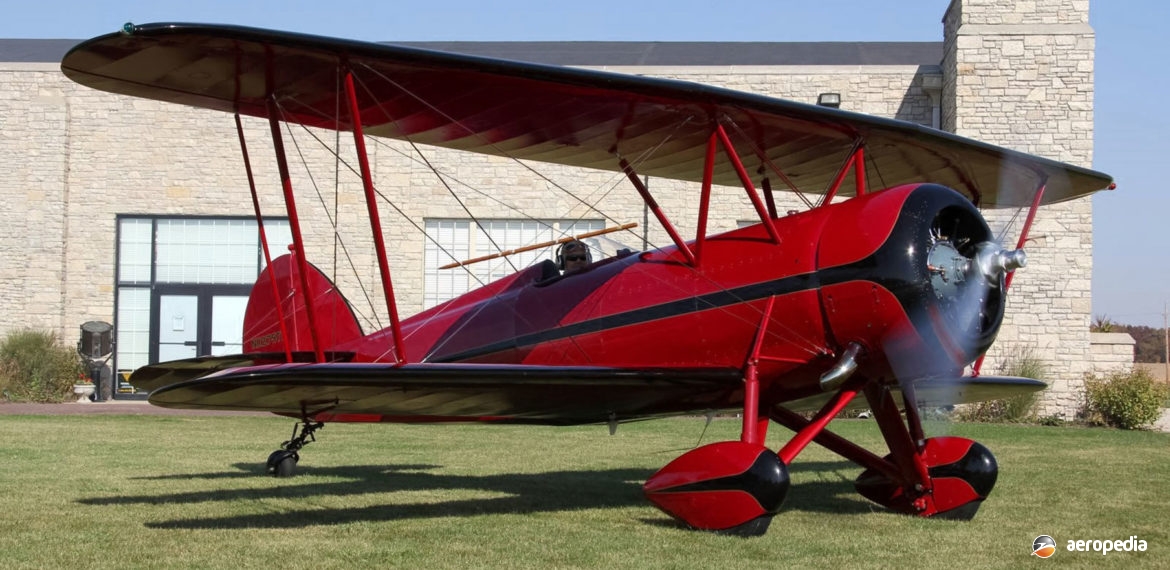Photograph:
Nuwaco T-10 ZK-WTW (c/n 21) shortly after arrival in New Zealand (NZCIVAIR)
Country of origin:
United States of America
Description:
Two-seat sporting biplane
Power Plant:
One 179 kw (240 hp) Continental W-670 seven-cylinder air-cooled radial engine
Specifications:
- Wingspan: 9.32 m (30 ft 7 in)
- Length: 7.16 m (23 ft 6 in)
- Height: 2.74 m (9 ft)
- Cruising speed at 65% power: 209 km/h (130 mph)
- Landing speed: 77 km/h (48 mph)
- Empty weight: 545 kg (1,199 lb)
- Useful load: 419 kg (923 lb)
- Loaded weight: 1,179 kg (2,600 lb)
History:
Advance Aircraft Company, which later became the Waco Aircraft Company, was well known for building light passenger aircraft in the 1920s and a number of examples of the series have operated in this part of the world. One of its designs was the Waco 10 and this was a series of three-seat open cockpit biplanes which was a development of the Waco 9. The Model 10 was a single-engine three-seat single-bay biplane constructed of steel tube frame, the aircraft overall being covered in fabric. The two passengers sat side-by-side in the forward cockpit under the upper wing and the pilot had a separate cockpit. Aircraft produced from 1927 were fitted with the Curtiss OX-5 liquid-cooled V-8 engine which provided 67 kw (90 hp). One example of the Model 10 operated in New Guinea.
The type was used extensively for barnstorming and joyriding throughout the United States and, although only 60 examples were built at the Waco facility at Troy in Ohio, 18 examples are known to survive, most in museums, including one at the EAA AirVenture Museum at Oshkosh in Wisconsin. A couple are airworthy.
In more recent times a company known as NuWaco Aircraft Company based at Littleton in Colorado has produced an aircraft based on the design of the Model 10. Also known as the Taperwing, a lot of interest has been shown in the Waco series and a couple of companies in the United States have produced aircraft similar in appearance to the originals but using modern construction methods. Ernest E Bode and his sons in Colorado developed the design as a kit which, to meet liability problems, is described as “in no way was intended to be a replica of the original taperwing.”
This new aircraft is fitted with a Jacobs radial engine, or a Continental W-670 radial which is still available in numbers as it was fitted to many thousands of examples of the PT-17 Stearman. This is a 11 litre (668 cub in) seven cylinder four-cycle engine weighing 211 kg (465 lb). It is also believed examples have been built using the eastern European Vedeneyev M-14P radial engine. The first kit aircraft completed differed in appearance from the original in having the rear fuselage raised over the headrests in order to install a sliding canopy if it was required.
To date only a few examples are known to have been completed but one kit completed in the United States as N275TW was imported to New Zealand in mid-2015, becoming ZK-WTW (c/n 21) for Cantol Paul of Mt Maunganui.

